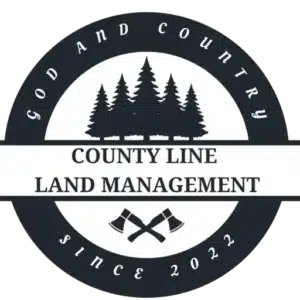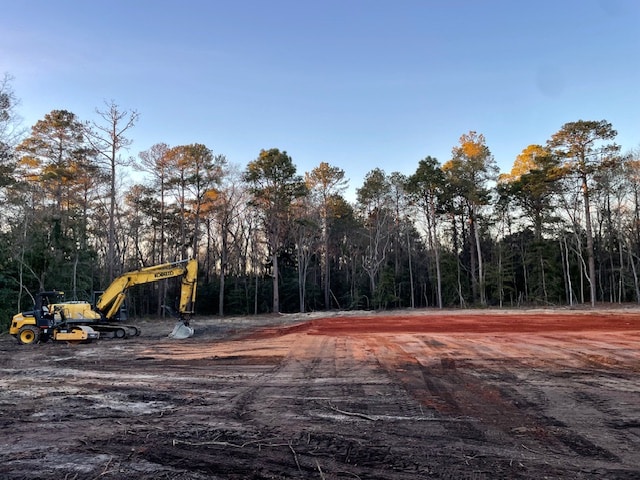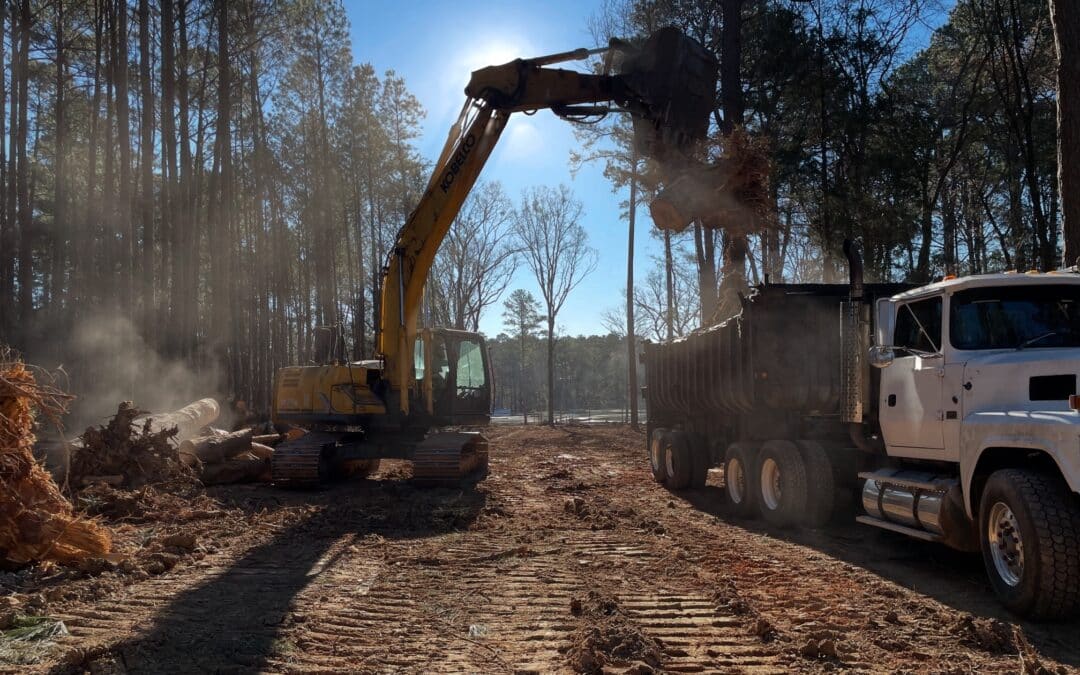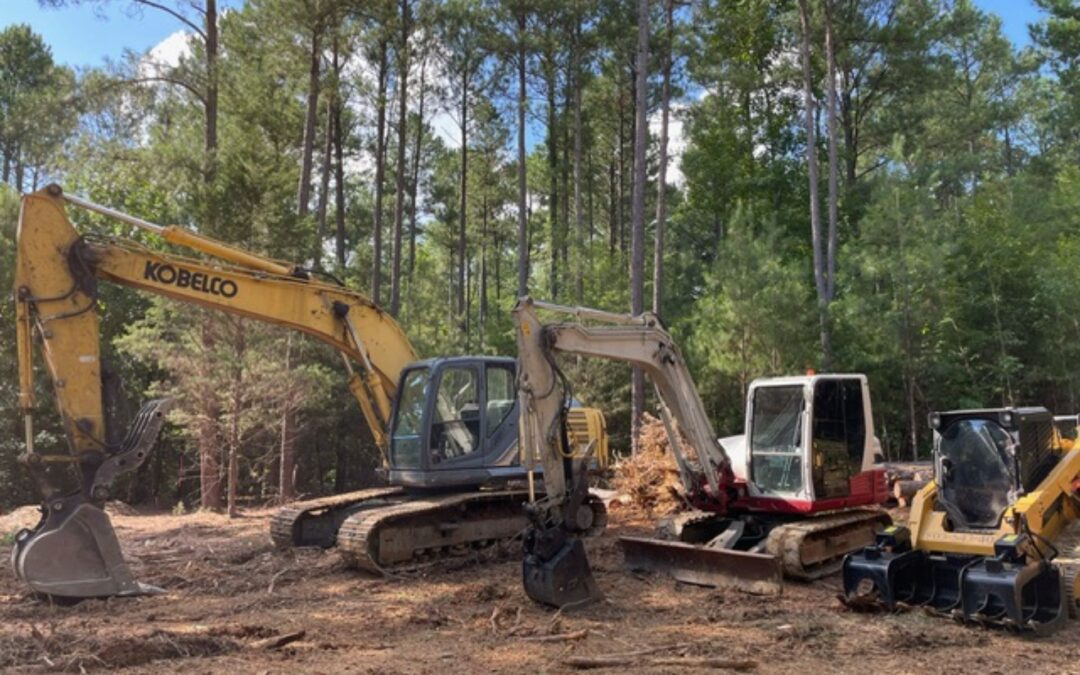Clearing land might seem like a straightforward task — just remove the trees, brush, and stumps, right? But in reality, it’s a project that requires planning, expertise, and a solid understanding of local regulations, environmental factors, and long-term property goals.
Whether you’re preparing land for a custom home, a barndominium, or simply reclaiming overgrown acreage, land clearing is the first step toward turning your vision into reality.
In this post, we’ll break down 5 essential things you need to know before starting a land clearing project in South Carolina, so you can avoid common pitfalls, save money, and set your property up for success.
Let’s dive in.
1. Know the Local Regulations and Permits
Before a single tree is removed or a stump is ground down, you’ll need to understand the local laws and permit requirements for your project. South Carolina has regulations designed to protect natural resources, prevent erosion, and maintain environmental balance.
Key Questions to Ask Yourself:
- Do I need a permit to clear my land?
- Are there protected areas (e.g., wetlands, wildlife habitats) on my property?
- What are the local disposal rules for vegetation and debris?
Why This Matters:
Clearing land without the proper permits can result in fines, delays, or even project shutdowns. Additionally, failing to follow environmental guidelines can cause long-term damage to your property and surrounding areas.
👉 Pro Tip: Always check with your local county office or hire a professional who’s familiar with South Carolina’s land clearing regulations.
🛠️ Related Resource: Learn more about our Land Clearing services here.
2. Understand Your Land’s Terrain and Soil Composition
Not all land is created equal. The terrain, soil type, and existing vegetation will all influence how your clearing project should be approached.
Common Challenges in South Carolina:
- Clay Soil: Compacts easily, making drainage tricky.
- Steep Slopes: Increase the risk of erosion after clearing.
- Dense Brush and Stumps: Require specialized equipment to remove properly.
Why This Matters:
Clearing without understanding the land’s characteristics can lead to erosion problems, unstable soil, and drainage issues.
👉 Pro Tip: Have your land evaluated by a professional before starting the clearing process. They’ll assess the soil, slope, and any potential challenges unique to your property.
🛠️ Related Resource: See how we handle grading and drainage after clearing.
3. Plan for Debris Management
Clearing land doesn’t just mean removing trees and brush — it also means deciding what to do with all that debris afterward.
Your Main Options for Debris Management:
- Burning On-Site: Permitted in some areas but heavily regulated.
- Chipping and Mulching: Eco-friendly and can be reused on your property.
- Hauling Away: Requires trucks and approved disposal sites.
Why This Matters:
Improper debris management can lead to piles of rotting vegetation, fire hazards, and even fines.
👉 Pro Tip: Discuss debris management options with your land clearing contractor upfront to avoid surprises later.
4. Think About the Next Phase After Clearing
Clearing is just the first step in most land projects. What comes next will determine how the cleared land is prepared and used.
Common Next Steps After Clearing:
- Grading and Leveling: Ensure stable terrain and proper drainage.
- Building Pads: Create a compact, level surface for homes, barns, or workshops.
- Access Roads: Build stable pathways for construction equipment and vehicles.
Why This Matters:
If the clearing phase isn’t aligned with the next steps, you could face costly rework, delays, or structural issues down the line.
👉 Pro Tip: Work with a team that can handle clearing, grading, and site prep seamlessly for a smoother project timeline.
5. Hire Professionals With the Right Equipment and Experience
Land clearing is a job for trained professionals with the right tools and expertise. DIY approaches or underqualified contractors often lead to:
- Unnecessary property damage
- Safety hazards
- Poor debris management
- Legal complications
Why Hiring Professionals Matters:
- Efficiency: Specialized equipment clears land faster and safer.
- Knowledge: Professionals understand soil, drainage, and erosion risks.
- Compliance: They ensure all permits and environmental laws are followed.
👉 Pro Tip: Ask potential contractors about their experience with South Carolina terrain and local regulations before hiring.
🛠️ Related Resource: Schedule a consultation with our team today.
FAQs About Land Clearing in South Carolina
- Do I need a permit for land clearing in South Carolina?
Yes, most counties require permits, especially for larger projects. - Can I handle small-scale clearing on my own?
It depends on the project. Small brush clearing might be manageable, but tree removal and stump grinding require professional tools. - What happens to the debris after clearing?
Debris can be burned (if permitted), mulched, or hauled away. Professionals will recommend the best option for your property. - How long does a clearing project usually take?
It depends on the size and complexity of the property. A professional team will provide a timeline estimate upfront.
Conclusion: Clear Land, Clear Plan, Clear Results
Clearing land is more than just removing trees — it’s about preparing your property for the future with precision and care.
By understanding local regulations, terrain characteristics, debris management, and the importance of professional expertise, you can ensure your land clearing project is a success from start to finish.
If you’re ready to get started, County Line Land Management is here to guide you through every step.



